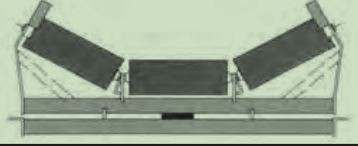 Afrikaans
Afrikaans  Albanian
Albanian  Amharic
Amharic  Arabic
Arabic  Armenian
Armenian  Azerbaijani
Azerbaijani  Basque
Basque  Belarusian
Belarusian  Bengali
Bengali  Bosnian
Bosnian  Bulgarian
Bulgarian  Catalan
Catalan  Cebuano
Cebuano  Corsican
Corsican  Croatian
Croatian  Czech
Czech  Danish
Danish  Dutch
Dutch  English
English  Esperanto
Esperanto  Estonian
Estonian  Finnish
Finnish  French
French  Frisian
Frisian  Galician
Galician  Georgian
Georgian  German
German  Greek
Greek  Gujarati
Gujarati  Haitian Creole
Haitian Creole  hausa
hausa  hawaiian
hawaiian  Hebrew
Hebrew  Hindi
Hindi  Miao
Miao  Hungarian
Hungarian  Icelandic
Icelandic  igbo
igbo  Indonesian
Indonesian  irish
irish  Italian
Italian  Japanese
Japanese  Javanese
Javanese  Kannada
Kannada  kazakh
kazakh  Khmer
Khmer  Rwandese
Rwandese  Korean
Korean  Kurdish
Kurdish  Kyrgyz
Kyrgyz  Lao
Lao  Latin
Latin  Latvian
Latvian  Lithuanian
Lithuanian  Luxembourgish
Luxembourgish  Macedonian
Macedonian  Malgashi
Malgashi  Malay
Malay  Malayalam
Malayalam  Maltese
Maltese  Maori
Maori  Marathi
Marathi  Mongolian
Mongolian  Myanmar
Myanmar  Nepali
Nepali  Norwegian
Norwegian  Norwegian
Norwegian  Occitan
Occitan  Pashto
Pashto  Persian
Persian  Polish
Polish  Portuguese
Portuguese  Punjabi
Punjabi  Romanian
Romanian  Russian
Russian  Samoan
Samoan  Scottish Gaelic
Scottish Gaelic  Serbian
Serbian  Sesotho
Sesotho  Shona
Shona  Sindhi
Sindhi  Sinhala
Sinhala  Slovak
Slovak  Slovenian
Slovenian  Somali
Somali  Spanish
Spanish  Sundanese
Sundanese  Swahili
Swahili  Swedish
Swedish  Tagalog
Tagalog  Tajik
Tajik  Tamil
Tamil  Tatar
Tatar  Telugu
Telugu  Thai
Thai  Turkish
Turkish  Turkmen
Turkmen  Ukrainian
Ukrainian  Urdu
Urdu  Uighur
Uighur  Uzbek
Uzbek  Vietnamese
Vietnamese  Welsh
Welsh  Bantu
Bantu  Yiddish
Yiddish  Yoruba
Yoruba  Zulu
Zulu Optimizing Conveyor Systems with Enhanced Head Roller Design for Improved Material Handling Efficiency
Understanding Conveyor Head Roller The Backbone of Material Handling Systems
In the world of material handling, efficiency and reliability are paramount. Conveyor systems have become an indispensable part of industries ranging from manufacturing to logistics, and central to these systems is the conveyor head roller. This component plays a critical role in the overall functioning of conveyor belts, influencing aspects like stability, performance, and maintenance.
What is a Conveyor Head Roller?
A conveyor head roller, or head pulley, is positioned at the discharge end of a conveyor belt. This roller serves multiple purposes, including guiding the conveyor belt, maintaining its tension, and facilitating the movement of materials. The design and functionality of the head roller are crucial for ensuring that material transfer is smooth and efficient.
Typically made of high-strength materials, such as steel or composite substances, the head roller is engineered to withstand significant operational stresses. It usually features a cylindrical shape, with a rubber or other form of surface that enhances friction, aiding in the movement of materials. During operation, the head roller drives the belt forward, allowing materials to be transported from one location to another.
Importance of Proper Head Roller Functionality
The head roller is integral to the success of any conveyor system. If the roller malfunctions or wears out, the entire system can be compromised. Potential issues include belt misalignment, which may cause material spillage, increased wear on the belt, and in severe cases, complete system failure. Regular maintenance of the head roller, including inspections and replacements, is essential to prevent such issues.
conveyor head roller

Moreover, a well-functioning head roller contributes to increased productivity. By ensuring that materials are effectively transferred without interruption, companies can achieve more efficient operations, ultimately leading to cost savings and better service delivery.
Design Variations
Head rollers come in various designs to meet the specific needs of different industries. For example, some rollers are designed with a crowned shape, helping to keep the belt centered and minimizing slippage. Others may have lagging – a surface treatment that improves grip and reduces wear on the belt. In environments where extreme conditions are the norm, such as mining or recycling, specialized head rollers are manufactured to handle heavy loads and abrasive materials.
Customization and Material Selection
The selection of materials for head rollers is also tailored to the application. For instance, industries that deal with corrosive substances might opt for stainless steel rollers to ensure longevity and resistance to rust. Additionally, in sectors requiring hygienic conditions, like food processing, non-porous and easy-to-clean materials may be preferred.
Conclusion
The conveyor head roller is often an underappreciated component of material handling systems, yet its significance cannot be overstated. From maintaining belt tension to enhancing efficiency, the head roller is vital for smooth operations. With continued advancements in technology and materials, the design and functionality of these rollers are continually improving, leading to more robust and reliable conveyor systems. Industries aiming to enhance their material handling processes must recognize the importance of investing in high-quality conveyor head rollers, ensuring optimal performance and longevity of their systems. Investing in the right head roller can lead not only to improved efficiency but also to substantial cost savings over the lifespan of the conveyor system.
-
Revolutionizing Conveyor Reliability with Advanced Rubber Lagging PulleysNewsJul.22,2025
-
Powering Precision and Durability with Expert Manufacturers of Conveyor ComponentsNewsJul.22,2025
-
Optimizing Conveyor Systems with Advanced Conveyor AccessoriesNewsJul.22,2025
-
Maximize Conveyor Efficiency with Quality Conveyor Idler PulleysNewsJul.22,2025
-
Future-Proof Your Conveyor System with High-Performance Polyurethane RollerNewsJul.22,2025
-
Driving Efficiency Forward with Quality Idlers and RollersNewsJul.22,2025





























